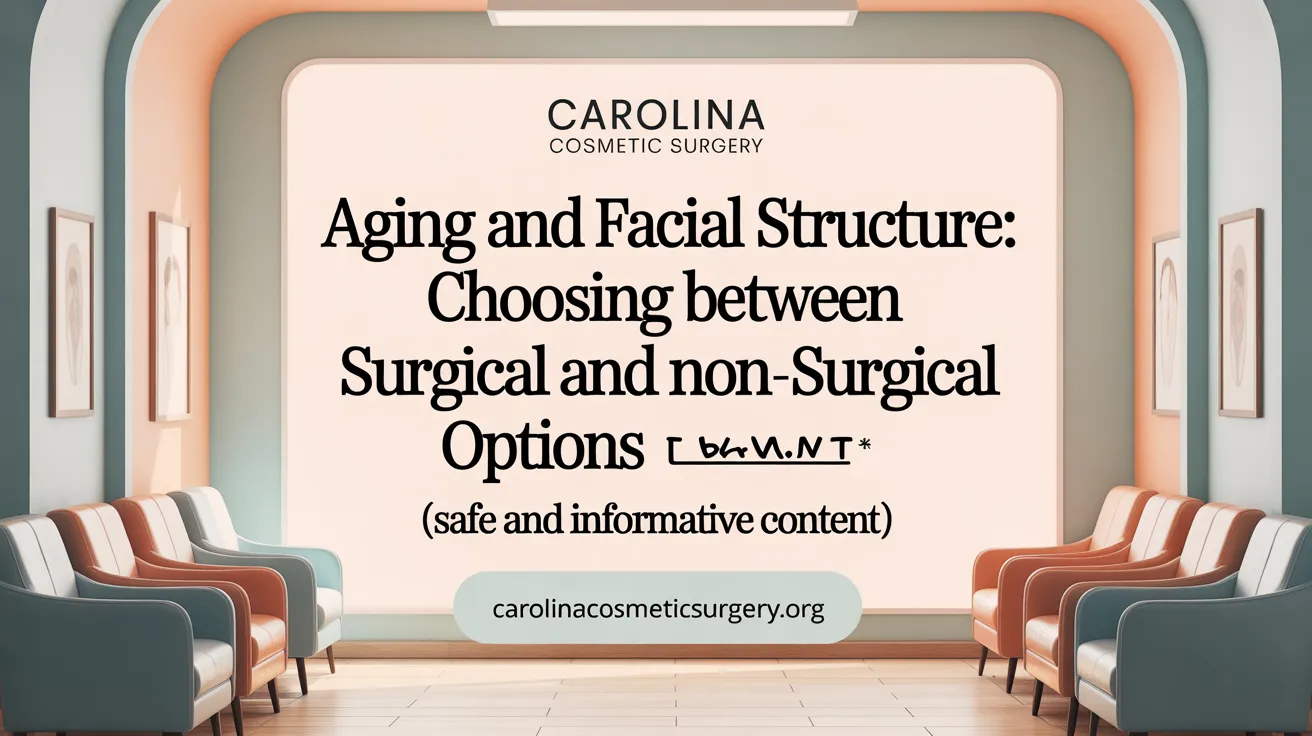Understanding When to Consider a Facelift
Determining the best age for a facelift is nuanced, shaped by individual aging signs, anatomy, and lifestyle rather than chronological age alone. This article explores key considerations, expert insights, and common misconceptions to help readers better understand the factors influencing optimal facelift timing and how to approach this personal decision wisely.
Factors Influencing the Timing for a Facelift
What factors influence the appropriate timing for a facelift?
The decision of when to undergo a facelift is largely based on individual aging signs and skin condition, rather than a specific chronological age. Often, signs like sagging skin, deep wrinkles, and loss of jawline definition serve as signals that a person may benefit from surgical intervention.
Skin elasticity plays a vital role in determining the best time for a facelift. Younger patients, typically in their 40s and early 50s, may retain enough elasticity for less invasive procedures like mini facelifts, which can yield natural results and longer-lasting effects. As people age, skin loses its firmness, and more comprehensive surgeries might be necessary.
External factors such as lifestyle habits significantly influence aging progression. Excessive sun exposure, smoking, poor diet, and weight fluctuations can accelerate skin laxity and deepen facial wrinkles. Those habits are important considerations when planning the timing of a facelift.
Genetics also play a critical role. Some individuals may experience early sagging or wrinkles despite a healthy lifestyle due to genetic predisposition. Conversely, others with favorable genetics may delay the need for surgical rejuvenation.
Beyond physical signs, psychological readiness and overall health are essential. Being mentally prepared for surgery, recovery, and potential risks ensures better outcomes. A healthy individual with no serious medical conditions is typically a better candidate, regardless of age.
The role of a reputable, experienced surgeon is crucial. During a consultation, they assess facial anatomy, skin quality, and aging patterns, advising on the most suitable timing and approach. They can also inform about recovery expectations, possible risks, and long-term results.
Ultimately, the ideal timing for a facelift varies from person to person. It should be personalized based on visible signs of aging, lifestyle, health, and desired aesthetic outcomes, rather than waiting for a fixed age. Regular consultations can help determine when the benefits outweigh the risks and ensure a natural, lasting appearance.
Age Ranges and Signs of Aging Indicating Optimal Facelift Timing

What is the best age to get a facelift?
The ideal age for a facelift varies from person to person and depends primarily on individual aging signs, skin condition, and overall health rather than on a specific age. Most patients typically seek the procedure between their mid-40s and early 50s, which is when signs of aging become more evident yet skin still maintains enough elasticity for effective lifting.
In the late 30s and early 40s, some individuals start to notice mild sagging, fine lines, and early jowling. For these patients, less invasive options such as mini facelifts or preventive treatments might be more suitable. Conversely, those in their 50s and beyond often experience more pronounced jowls, loose skin, and volume loss, making full facelifts a more appropriate solution.
Long-term, younger individuals tend to enjoy longer-lasting results because their skin regenerates more quickly and retains elasticity. In contrast, older patients may require additional procedures later in life to maintain their rejuvenated appearance.
Ultimately, the best timing depends on the presence of aging signs like deep wrinkles, sagging skin, and loss of volume, rather than age alone. A thorough consultation with a qualified plastic surgeon helps tailor the recommendation to the individual.
Typical age ranges for mini and traditional facelifts
Mini facelifts are often performed on patients in their late 30s to early 50s, primarily targeting early signs such as mild jowling and sagging around the cheeks or jawline. This less invasive procedure offers quicker recovery and more natural results for those with less extensive aging.
Full, traditional facelifts are generally suited for patients in their 50s and 60s, where more significant skin laxity and deeper wrinkles are present. These surgeries tend to provide longer-lasting and more dramatic results, often lasting up to a decade.
For individuals over 65, personalized approaches are often considered based on skin elasticity and overall health. Combining a facelift with neck lifts or other procedures might be necessary to achieve optimal results.
| Age Group | Common Signs of Aging | Recommended Procedures | Notes |
|---|---|---|---|
| Late 30s - Early 50s | Mild sagging, fine lines, beginning jowling | Mini facelift, non-invasive treatments | Early intervention can prolong youthful appearance |
| 50s - 60s | Pronounced sagging, deep wrinkles, volume loss | Full facelift, neck lift | Longer-lasting and more comprehensive rejuvenation |
| 60s and beyond | Significant skin laxity, deep creases | Full facelift, personalized approach | Often combined with other procedures for best outcome |
How signs like jowls, loose skin, and volume loss affect timing
Visual signs like jowls, loose skin along the jawline or neck, and loss of facial volume are major indicators that a facelift might be appropriate. These signs typically appear more prominently in the 50s and 60s but can emerge earlier depending on genetics, lifestyle, and sun exposure.
Patients noticing deep facial folds, sagging skin, or hollowed cheeks often benefit from timely surgical intervention before these signs become severe. Addressing these changes early can lead to more natural results and longer-lasting effects.
In summary, while age provides a general guideline, facial aging signs are more reliable indicators for the right timing of surgery. Each individual's anatomy and lifestyle influence when a facelift becomes the most beneficial.
How Aging Impacts Facial Structure and Treatment Choices

How does aging affect facial structure and influence the decision between surgical and non-surgical facial rejuvenation?
Aging brings about notable changes in the facial bones, fat pads, and skin, which influence how treatments are planned and executed. Over time, there is a reduction in facial bone density, resulting in the loss of support for the overlying soft tissues. Additionally, fat pads in the cheeks, around the eyes, and in the jawline tend to shrink and shift downward, contributing to hollowing and sagging.
These structural losses lead to a decrease in facial volume, making features appear sunken or less defined. Collagen and elastin, essential proteins that keep skin firm and elastic, decrease with age, leading to sagging, deep wrinkles, and a less plump appearance.
When deciding on facial rejuvenation, one must consider these structural aspects. Surgical options like facelifts can lift and tighten the sagging skin, repositioning the underlying tissues and restoring more youthful contours. They effectively counteract the effects of bone loss and tissue descent.
Non-surgical methods, such as Botox, dermal fillers, laser treatments, and skincare routines, are also vital. Fillers, for example, can restore volume in areas where fat has depleted, providing a natural lift and smoothing wrinkles. Botox relaxes muscles that cause dynamic lines, preventing deeper creases.
The choice depends on the extent of aging signs. Patients with significant structural changes, including loose skin and deep folds, typically benefit from surgical procedures. Conversely, those with mild aging signs and good skin elasticity might prefer non-invasive options.
Ultimately, a combination of surgical and non-surgical treatments often yields the best results. A comprehensive assessment by a qualified specialist guides the optimal approach based on individual anatomy, skin condition, age, and personal goals.
Individual Anatomy, Personal Circumstances, and Timing

How do individual circumstances and facial anatomy affect the decision on when to undergo a facelift?
The timing of a facelift is highly dependent on personal facial anatomy and individual circumstances. Different facial structures and aging patterns influence both the suitability of the procedure and the expected longevity of the results.
Facial features such as skin thickness, muscle laxity, and bone structure play a crucial role. For example, thicker skin may require more extensive tightening, while a person with good bone support may achieve longer-lasting results. The degree of muscle looseness, particularly in the SMAS layer (superficial muscular aponeurotic system), helps determine whether a full or mini facelift is appropriate.
Personal health is another critical factor. A patient’s overall medical condition, skin quality, and lifestyle impact healing and risk levels. Those with healthier skin and excellent elasticity may undergo surgery earlier, possibly in their 40s, with results lasting longer.
Aesthetic goals and psychological readiness are equally important. Patients motivated by changes in appearance and possessing realistic expectations tend to be more satisfied with outcomes.
Because each face ages uniquely, surgeons emphasize tailoring the timing based on individual features rather than age alone. An assessment considering all these factors ensures a procedure that aligns with the patient’s anatomy and life stage, optimizing natural results and minimizing complications.
In summary, personalized evaluation of facial anatomy—such as skin thickness, muscle tightness, and bone structure—combined with health status and aesthetic aspirations, guides the ideal timing for a facelift. This approach ensures that the surgery is performed when it will be most effective and beneficial for the individual.
Debunking Myths and Comparing Early vs Later Facelift Benefits

What are common myths and misconceptions about the best age for facelift surgery?
Many believe facelifts are only appropriate for individuals in their late 40s or older, but this is a misconception. In reality, there is no strict age limit. Younger patients, even those in their 30s or early 40s, often consider facelifts or mini facelifts to proactively address early signs of aging, such as mild sagging or volume loss.
Another myth is that facelifts are predominantly for women; men are increasingly seeking the procedure for facial rejuvenation. Additionally, some think that facelifts result in an unnatural or "frozen" appearance. Modern techniques emphasize natural results that maintain facial expression and individuality.
Ultimately, the decision depends on personal concerns, skin condition, and anatomical features. Proper consultation with a qualified surgeon helps determine the right time, rather than relying on age-based stereotypes.
What are the benefits of having an early versus a later facelift procedure?
Opting for an early facelift offers advantages such as maintaining more natural facial contours, delaying the progression of more severe aging signs like deep wrinkles and jowls. It can also lead to quicker recovery times due to better skin elasticity associated with younger skin. Early intervention helps preserve volume and support long-term results, potentially reducing the need for more invasive procedures later.
However, early facelifts are typically recommended when specific aging signs are evident. Waiting until aging becomes more pronounced allows for more comprehensive correction, but may result in longer surgeries and recovery periods. Older patients might require more extensive tightening and additional procedures such as neck lifts.
In summary, early facelifts can provide subtle, natural rejuvenation and prolong a youthful appearance, while waiting for more pronounced signs may involve more extensive surgical intervention. The best approach depends on individual aging patterns and goals, emphasizing personalized assessment over age alone.
Personalized Timing is Key to Successful Facelift Outcomes
The notion of a single "best age" for a facelift oversimplifies a complex decision influenced by individual anatomy, aging signs, lifestyle, and personal goals. While many patients benefit from surgery between their 40s and 60s, successful outcomes depend more on skin condition and facial structure than age alone. Early facelifts can offer lasting, natural results, while later procedures may address more significant aging effectively. Consulting a qualified, board-certified plastic surgeon is essential to tailor timing and techniques to each unique case, ensuring safety, satisfaction, and rejuvenation that honors individual aging journeys.
References
- How young is too young for a facelift? | ASPS
- Best Age for Facelift Surgery: Insights from Dr. Donath
- Is there an ideal age for a facelift? | London Plastic Surgeon
- How Long Does a Facelift Last and Other FAQs
- How Long Does a Facelift Last? What Is the Best Age to Get a ...
- What's the Best Age for a Face-lift? - Michael Schwartz, MD
- What Is The Average Age Of A Facelift Patient? | Dr. Markarian
- The Ultimate Guide To Getting A Facelift Before 50 - Asthetica
- Best Age for a Facelift: When Should You Get One? - Dr. Morwood
- What's the Best Age for a Facelift? - Elliott Rose, MD
